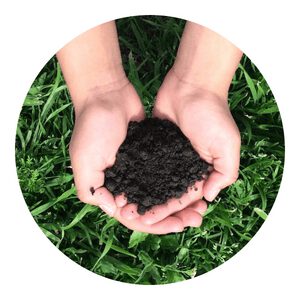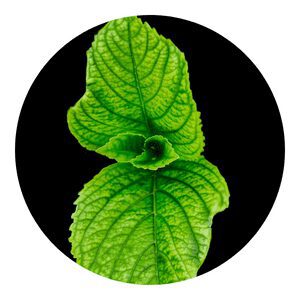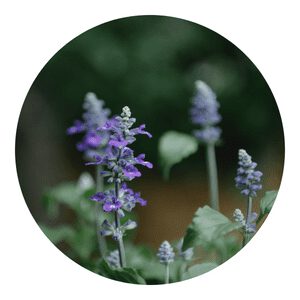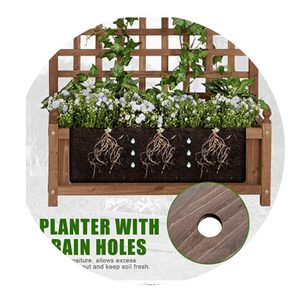How to grow organic Basil
Chappy the gardener has released a new guide on how to grow organic basil.
This guide covers everything from choosing the right location and soil, to watering and fertilizing your plants.
With step-by-step instructions and plenty of photos, this guide is the perfect resource for anyone interested in growing their own organic basil.
Basil is a popular herb that is used in many cuisines around the world. It has a strong flavor and can be used fresh or dried.
Growing your own basil is a great way to get fresh herbs year-round, and it’s much cheaper than buying them at the store.
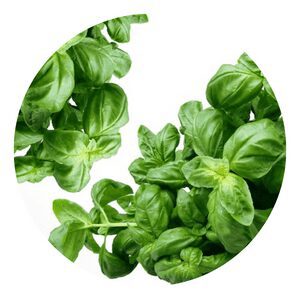
Basil Menu
How to grow basil?
There are two ways to grow basil optimally. The first and recommended way is to purchase a ready-made seedling from the nursery or alternatively to root the basil stalks yourself.
The rooting process takes about two weeks and is carried out as follows: Choose healthy and beautiful stems from a basil bush and put them in a glass of water.
Every few days be sure to add water to the glass in such a way that it stays full at all times. After about two weeks the stems will take out roots, and these roots can be planted.
In principle, the roots can be planted in the ground, but it is preferable to plant in a planter or pot – so the plant will be less prone to pests and diseases and its chances of surviving and thriving will increase.
The best time to plant basil is in spring and summer – basil is very sensitive to cold and is unlikely to grow in cold climates.
Preparations before planting
Before you go about planting the plant, make sure that the roots look stable and healthy – this will have great significance later on.
Note that the ends of the stem remain solid and do not change their hue.
Lighting conditions
Basil really likes sun.
Therefore, it is preferable to expose the basil to as many hours of sun as possible without fear, with the recommendation being between six and eight hours of sun.
Watering the basil
It is important to water the plant often and make sure the soil stays moist.
Basil grown in soil that is not moist enough will be vulnerable and have weak flavors.
The rule is simple: every day you have to push your finger in the seedling and check if the soil is moist or not. If the soil is dry, water back – do not worry, basil loves water.
The work of pruning
The greatest advantage of pruning encouraged and increased the growth rate of basil by pruning the first leaves.
This is a very important step and has a significant effect on the final taste of the leaves – unprocessed basil will waste all the energy and water on the flowers, while the leaves will be left behind and will be wilted, small and have a bitter taste.
The recommendation is to prune about a third of the amount of leaves in the plant – those that are above the branch in the stem.
Trim each day a small amount or a growing amount once every two weeks.
Want to grow herbs at home regardless of the seasons and how much sun there is outside?
Pests
The most common pests of basil are leaf aphids, snails and larvae.
In the case of larvae, remember that the rule is this: if you do not eat from your basil, do not be surprised that someone else will eat.
Therefore, if you are looking for a plant for beauty, this is not exactly the case here.
Be sure to prune and use basil and you will see that fewer larvae will approach it.
If you have a serious attack, it is recommended to simply remove by hand – comb the leaves well, especially in the early morning or towards evening, pay attention also behind the leaves on the contours, you will probably find there some light green larvae that snack on your leaves.
The same goes for snails.
Aphids and other pests – You can prevent using an organic spray of neem oil, which is known to repel pests.
How to pick the basil leaves
The basil leaves can be picked without fear of harming its regrowth – do not hesitate to pick a few leaves whenever you feel like a great and aromatic taste in the dish.
However, the ideal time to pick this basil in the morning and for best results the preference is to pick a small amount of leaves.
In case you have several plants, it is better to pick a few leaves from each plant than to pick a whole stem to encourage faster growth.
Does basil need to be organic?
When basil is mentioned, most people think of pesto. This delicious sauce can be used on pasta, pizza, or even chicken.
The main ingredient in pesto is basil. So, does basil need to be organic?
The answer is yes and no.
Basil definitely needs to be organic if you plan on using it in a pesto sauce.
However, if you are only using the leaves to top off a dish, non-organic basil will be just fine.
Basil is a delicate herb that can be easily contaminated with pesticides and other chemicals.
Pesticides can not only make your pesto taste bad, but they can also be harmful to your health.
Organic produce is grown without the use of pesticides or other harmful chemicals.
What is the best organic fertilizer for basil?
Organic fertilizers are becoming more popular every day, with people becoming more conscientious of the food they eat and the products they use.
There are many different organic fertilizers on the market, but which one is the best for basil?
In order to answer this question, it is important to first understand what makes a good organic fertilizer for basil.
Basil needs a lot of nitrogen, phosphorus, and potassium to grow healthy and produce flavorful leaves. A fertilizer that contains all three of these nutrients is ideal for basil.
There are many different organic fertilizers that contain nitrogen, phosphorus, and potassium, but not all of them are created equal.
Some are better than others at providing these nutrients to plants.
The best organic fertilizer for basil is one that is made from natural ingredients and contains high levels of nitrogen, phosphorus, and potassium.
Does basil like coffee grounds?
There are many debates online about whether or not to add coffee grounds to soil for plants like basil.
Some people swear by the method, while others find that it makes no difference at all.
A study from the University of Athens in Greece set out to find once and for all if coffee grounds make a difference for basil plants.
Is banana water good for basil?
Banana water is a great way to keep your basil healthy and hydrated.
The high potassium content in banana water helps to strengthen the plant’s cell walls, preventing them from wilting.
Additionally, the sugar in banana water provides an energy source for the plant, helping it to grow tall and strong.
How do I make my basil bushy?
If you want your basil to grow bushy, you need to prune it regularly.
Cut off the top of the plant and pinch off the flowers as they form. This will encourage the plant to produce more leaves.
Feed your basil with a diluted fertilizer every two weeks, and make sure it gets at least six hours of sunlight per day.
how to grow basil hydroponically
Basil is an annual herb that is easy to grow hydroponically.
The key to success is choosing the right variety and providing the plants with plenty of light.
Basil can be grown in a wide range of temperatures, making it a popular choice for gardeners in both warm and cool climates.
Choose the right basil variety
If you want to grow basil hydroponically, you need to choose the right variety of basil to grow.
Some of the most popular varieties of basil include sweet basil, Thai basil, and holy basil.
Select the right growing medium
Basil is a popular herb that is used in many dishes. It can be grown hydroponically, which means that it does not need soil to grow.
The right growing medium needs to be used in order to grow basil hydroponically.
There are many different types of growing mediums available, but some work better than others.
One type of growing medium that can be used to grow basil hydroponically is coco coir.
Coco coir is made from coconut husks and is a natural growing media that is rich in nutrients. It also helps to retain moisture, which is important for basil plants.
Another type of growing medium that can be used to grow basil hydroponically is vermiculite.
Vermiculite is a mineral that helps to retain moisture and provides the plants with essential minerals.
Choose the right hydroponic system
Basil is an annual, tropical herb that is used in both culinary and medicinal applications.
It is a popular herb to grow hydroponically because it can be grown indoors all year long.
There are a few different types of hydroponic systems that can be used to grow basil hydroponically.
The type of system that you choose will depend on your growing space, budget, and experience level.
Supply the plants with enough light
Basil can be grown hydroponically, which means that it can be grown without soil.
In order to grow basil hydroponically, you will need to supply the plants with enough light to grow.
Provide the plants with enough nutrients
Basil is a popular herb that can be grown hydroponically.
In order to grow basil hydroponically, the plants need to be provided with enough nutrients to grow.
The most important nutrients for basil are nitrogen, phosphorus, and potassium. These nutrients can be provided through the use of fertilizers or liquid plant foods.
When growing basil hydroponically, it is important to keep the pH level of the water between 6 and 7.
This will ensure that the plants are able to absorb the nutrients they need from the water.
The water should also be aerated in order to provide oxygen to the roots of the plants.
Maintain proper pH levels
In order to grow basil hydroponically, it is important to maintain the pH levels in the growing solution.
The ideal pH range for basil is 6.0 to 6.8. If the pH levels are outside of this range, the basil may not grow properly or may not produce any leaves at all.
Does basil grow well in a greenhouse?
Basil is a great herb to grow in a greenhouse. It is a warm weather crop that does not do well in cold weather.
In a greenhouse, you can control the temperature and keep it warm enough for basil to grow.
Basil is a popular herb used in cooking. It has a strong, peppery flavor that goes well with many dishes.
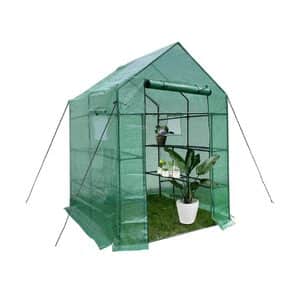
How do you control basil pests?
There are a few pests that can be a problem for basil plants, but there are ways to control them.
Insects like whiteflies, aphids, and thrips can be treated with insecticidal soap or horticultural oil.
Slugs and snails can be controlled with slug bait or copper tape around the edge of the garden bed.
Finally, diseases like botrytis and downy mildew can be treated with fungicides.
How to Identify Basil Pests
Some common basil pests are aphids, whiteflies, spider mites, and thrips.
These pests can cause leaves to yellow and wilt, stunt plant growth, and even kill plants.
Identification of the pest is the first step in controlling it.
Growing Conditions
Basil can be a frequent annual or perennial that is also used as a fragrant ornamental plant.
Basil can grow in diverse climatic conditions such as Mediterranean, subtropical, temperate or tropical climates.
Basil has elliptical edible leaves serrated at the edges, in green or purple colors, in their shades, their taste is unique and ranges from sweet to bitter or spicy.
Basil has small flowers that grow in flowering stems, which appear in green, white, purple or red.
Organic basil growing conditions:
Warm weather
How to get basil for organic growing:
Plant / seedling / seeds / pruning
Disadvantages of growing basil:
Allopathy
Irrigation conditions in basil cultivation:
Multiple / medium / little irrigation, depending on the variety
Light conditions in optimal condition for growing basil:
Full sun / half shade / shade, depending on the variety
Recommended date for planting basil:
Spring
Pests of the basil plant:
Aphids, protective aphids
Is it worth buying a complex strain of basil:
No
Pruning date for basil:
All year round
Basil Pruning:
Pruning of flowering stems
Basil plant size:
0.1-1.8 meters
Basil growth rate:
Rapid / medium growth
You can grow basil at home:
Yes
You can also grow basil in a pot:
Yes
Flowering plant:
Flowering date for basil:
Spring-autumn
The basil powder is made by:
Bees, attracts pollinators
General information about the basil flower:
It is recommended to dilute the rash with basil except holy basil (if you want to attract pollinators). The more sun there is the more flowers there are. The plant can be planted in an area of full light but there are varieties that still require direct sunlight.
Dilution of herbaceous flower:
A small flower that grows in flowering stems, the basil flower comes in a variety of colors including green, white, purple or red.
Plant varieties:
Italian basil – sweet basil, is the most common and well-known basil.
American basil – Ocimum americanum with green leaves and white flowers.
Greek basil – small leaves, relatively strong.
Purple basil Dark opal basil – a variety of basil varieties with purple leaves. Dark opal basil is sold in Israel.
Lettuce basil – basil used for salads, with large leaves relative to other types of basil.
Pertho Pesto Basil – A delicate basil with pesto leaves. Its taste is delicate as well.
Persian basil – light green leaves. Also called basil licorice due to its sweetness.
Holy basil – Ocimum sanctum is also called (Ocimum tenuiflorum) – This is a perennial shrub, a sacred plant for Hindus and is called Tulsi.
Seed Growth:
Sowing basil:
Basil seeds are easy to grow
Preservation of basil seeds until sowing:
Store in a dry place at room temperature
Date of sowing basil:
Spring
Sowing distance in basil:
2-5 cm, better – this way you will not have to move the sprout too fast
Depth of basil sowing:
5-10 mm
Conditions for sowing basil:
Almost full sun, lots of water, warm place
Irrigation of basil seeds:
Medium watering – multiple
Germination time for basil:
1-3 weeks
The conditions of the basil sprout?
Half shade, regular watering
Edible leaves:
Date of velvet basil leaves:
In perennial varieties: all year round. In the annual varieties: spring-autumn.
Proper pruning of leaves in basil:
Leave several eyes on the branch so that the basil will grow in the same area again.
Information about basil leaves:
The basil has elliptical edible leaves serrated at the edges, in green or purple colors, in their shades, their taste is unique and ranges from sweet to bitter or spicy.
Use of basil leaves:
Salad, pesto, dry
Basil in Latin:
Ocimum
If you like basil, it is recommended to grow:
Italian basil, American basil, Greek basil, purple basil, lettuce leaf basil, Perpetu pesto basil, Persian basil, holy basil
Vegetative reproduction:
How to perform vegetative reproduction in fragrance:
Cutting: Take a branch, cut diagonally when it has 3 eyes, and put in a glass of water – preferably the glass is opaque. In some varieties a blessing is required.
Date of vegetative reproduction for growing basil:
All year round, the odds are better in the spring or summer.
Duration of root growth in growing vegetative reproduction in basil:
It takes several weeks for enough roots to develop so that it can be transferred.
Through the treatment of vegetative reproduction in fragrant reproduction:
The roots of the basil are tangled with each other so it is advisable not to put too many branches in one glass, because when you try to separate them the roots are torn.
In conclusion, growing organic basil is easy and rewarding.
By following the guidelines in this guide, you can produce a bountiful harvest of delicious, organic basil.
If you have any questions, feel free to ask them in the comments below.
Thanks for reading!
Click To Grow
Helps Us Grow – Share If You Like







